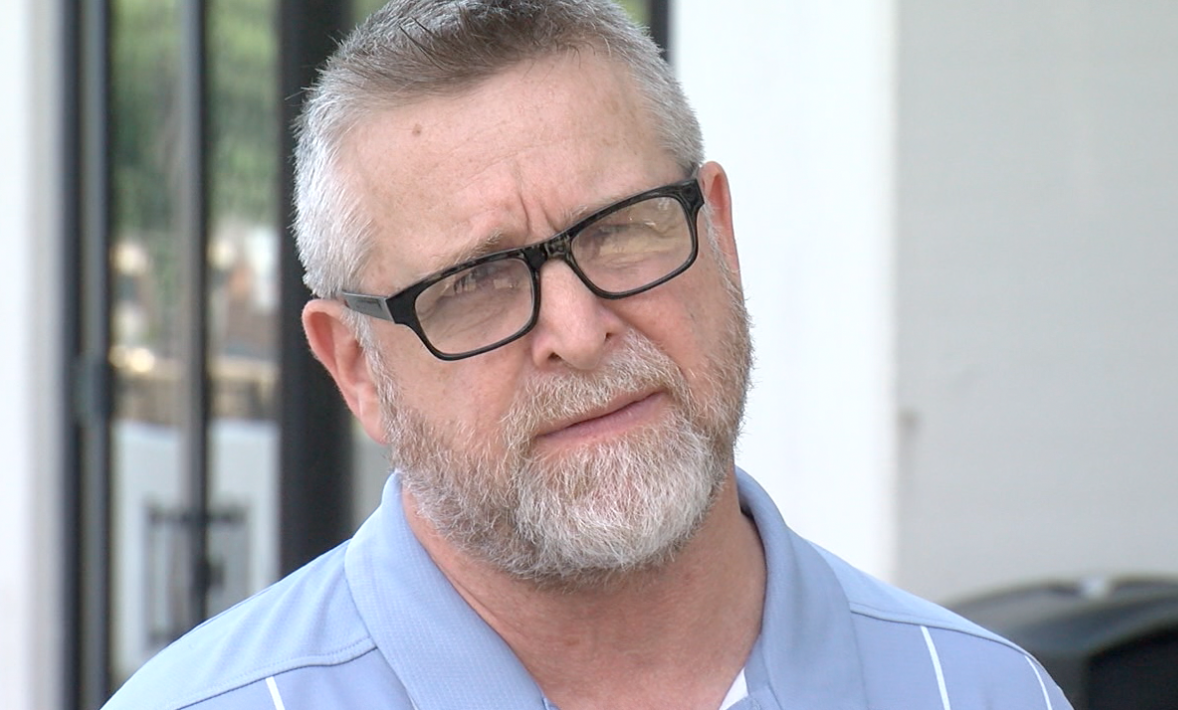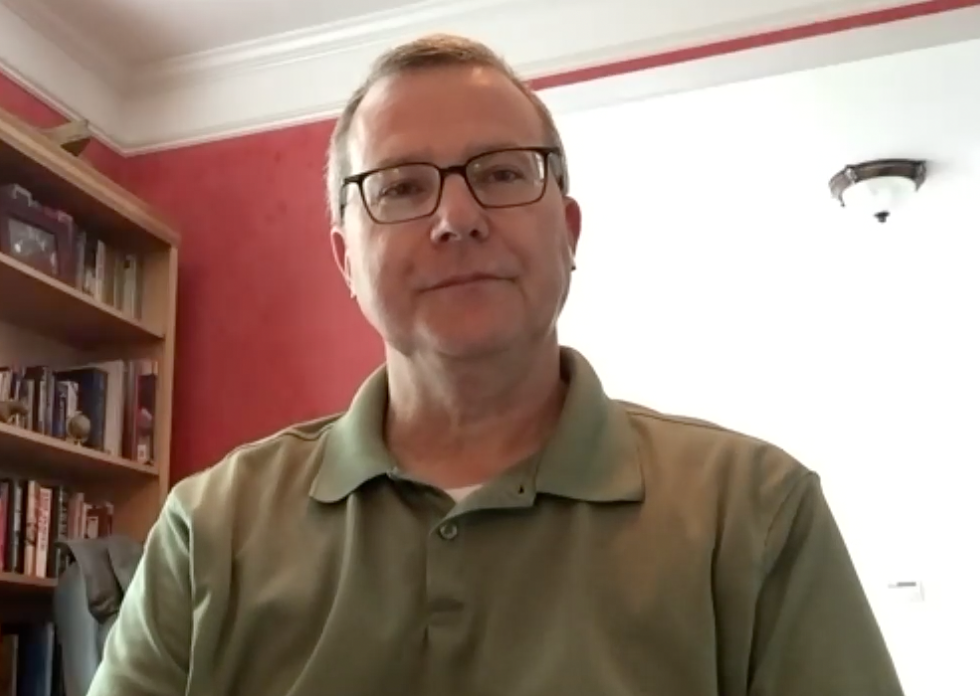CINCINNATI — Donald Gazaway was a father of four, a U.S. Army vet, a Bible study teacher and the always-smiling younger brother to Joy Gazaway.
His death certificate says he died of COVID-19 on April 19 at Pleasant Ridge Care Center, where he had recently gone for rehabilitation from a stroke. He was 60.
“We fully anticipated that he would be coming home. He did not,” said Gazaway, who delayed her brother’s memorial service until late summer because of the pandemic.
Now Gazaway is on a mission to make sure her brother, who she called "Toby," isn’t forgotten.
“This is the silent aspect of the pandemic," she said. "These people are dying, and nothing is said."

The WCPO I-Team and its Cleveland sister station, WEWS, teamed up for a joint investigation into why Ohio refuses to make public which nursing homes have COVID-19 deaths.
In an exclusive interview with WEWS on Tuesday, Gov. Mike DeWine said he will revisit the issue with Ohio Department of Health attorneys. In the past, he said, those attorneys have told him that COVID-19 fatality rates at nursing homes are considered private under state law.
“I’ve questioned this before, and I’m going back to the lawyers to say, 'Look, do you really think this is a violation of current federal law and current state law?' And we’ll get back to you on this," he said.

Other states such as Kentucky, Indiana, Michigan, Tennessee, Pennsylvania and West Virginia disclose facility-level COVID-19 death information to the public.
“Deaths might be of value,” DeWine said. “I’m not saying it’s not of value. Just because someone else is reporting something does not necessarily mean that it’s right.”
The Ohio Department of Health updates its list of COVID-19 cases at long-term care facilities every week. It also lists the number of deaths in such facilities by county. To Gazaway, that’s not enough.
“Fortunately, the governor has put the statistics on the website, but they don’t tell the whole story,” Gazaway said. “Families can’t go on that site and see how many fatalities, how many people died while they were staying in a particular facility.”

The Ohio Department of Health’s website shows Pleasant Ridge Care Center had 41 resident cases of COVID-19 and seven staff cases, but no active cases as of last week.
“My brother was one of those 41, and he died,” Gazaway said. “It might make a big difference, if you’re going to select a nursing home, to have that piece of information.”
Harold Sosna, owner of Pleasant Ridge Care Center, offered more context about what happened at his nursing home early in the pandemic.

“The staff was heroic while battling a significant and sudden outbreak despite very limited PPE,” according to a statement from Sosna. “Multiple patients got very sick in a very short period of time. Many had been there for a while, and their deaths were heartbreaking and overwhelming to a very caring group of dedicated caregivers.”
Gazaway’s brother died at the start of the pandemic, so she said she’s willing to give nursing homes and state health officials the benefit of the doubt about their response to COVID-19 early on. But now, more than six months into the pandemic, she doesn’t understand why more information isn’t available.

“There’s no reason, no justification why that information isn’t available,” she said.
A spokesperson for Ohio Department of Health declined to release facility-level COVID-19 deaths, citing privacy concerns.
“A person could be too identifiable and that information is ‘protected health information,’ as defined in … the Ohio Revised Code,” a health department spokesperson responded to WCPO.
Nursing home and long-term care residents account for 65% of all COVID-19 deaths in Ohio, or nearly 2,800 deaths, according to state health data. Earlier in the summer, their share was even higher: 70%.
WCPO in August filed a complaint in the Ohio Court of Claims to obtain that facility COVID death information. It joins the AARP and other media organizations from across the state that have been demanding the data for months.
“I do appreciate what WCPO has done and tried to push this issue because we need to have that information,” Gazaway said.

Elaine Ryan, vice president for state advocacy at the AARP, said Ohio should be more transparent.
“Only in knowing what’s going on in those facilities can you make the best judgment on behalf of your loved ones,” Ryan said.
COVID-19 death rates are crucial information for families to have before choosing a nursing home for loved ones, especially for short rehabilitation stays after surgery, she said.
“Unfortunately, what we’ve learned is a grim truth — that deaths are a lagging indicator of what’s actually occurring,” Ryan said. “We need to know where the outbreaks are and also how quickly we can take action to be able to save more lives.”
The Centers for Medicare and Medicaid (CMS) is now requiring nursing homes to report COVID deaths, but that information can be difficult to find and may be inaccurate because facilities were not required to report deaths before mid-May.
A WCPO review of that database showed that Gazaway’s death was not included. It lists the number of COVID-19 deaths at Pleasant Ridge Care Center, where he died, at zero.
That database reveals one of the highest COVID-19 death rates at long-term care facilities in Southwest Ohio occurred at Mercy Franciscan at West Park, where 13 resident deaths were recorded.
A June 18 infection control survey done at Mercy Franciscan by CMS revealed an even higher death total.
“Review of facility documents revealed the facility had an outbreak of COVID-19 with 75 total residents testing positive, 16 resident deaths, 26 facility and 4 agency staff testing positive,” according to the survey.
In a statement to WCPO, Nanette Bentley, a spokesperson for Bon Secours Mercy Health wrote: “Mercy Health confirms we have residents who have tested positive for and who have died from COVID-19 at West Park Senior Living. We follow guidance provided by the Centers for Disease Control and Prevention (CDC) and the Ohio Department of Health to minimize exposure to other residents and associates and have also tested every resident and associate frequently. We are deeply saddened when a resident of ours passes away … To protect resident privacy, we do not release further information beyond the information we provide to the state and other regulatory agencies.”
WCPO also used this database to find out which Ohio nursing homes had the most COVID deaths. Of those 11 facilities, nine of them had a below-average staffing rating, according to Medicare.
Mercy Franciscan is not one of those facilities. It has a four-star rating from Medicare for staffing.
Although it’s unclear if there’s a direct relationship between staffing levels and the number of deaths at each facility, WCPO’s findings did not surprise Bob Vines.
Vines is managing ombudsman for Pro Seniors in Cincinnati, a nonprofit advocacy group that serves seniors in Hamilton, Butler, Clermont, Clinton and Warren counties.

"Staffing was an issue before COVID ... It was difficult to hire folks and to retain folks," he said. "Now, I would imagine it’s even more difficult."
The nonprofit is getting more calls now than when the pandemic began, some directly from nursing home residents, about cold meals and lack of attention, he said.
"People aren't getting baths, their nail care isn't getting done, they're not getting any incontinence care that they need,” Vines said.
Some nursing homes don’t have enough staff to oversee outside visits between residents and family members, so they aren’t allowing visits at all, Vines said.

Pete Van Runkle, executive director of the Ohio Health Care Association, which represents more than 1,000 nursing homes, home care and assisted-living facilities, said staffing is a challenge for some nursing homes.
“They’re losing staff and, you know, we try to replace them, but again, that’s not always easy when we have a pandemic going on,” Van Runkle said. “This is really wearing on staff, to have a pandemic that’s gone on this long.”
In an August interview, Van Runkle told WCPO he wouldn’t oppose the state releasing fatality rates at nursing homes.
That’s exactly what Joy Gazaway is hoping for.
“It’s our truth to get out there … so that no other family has to go through this,” Gazaway said. “I would have looked at how many rates of coronavirus there were and how many fatalities … It may have helped me assess whether it was even a place that I wanted my brother to be placed.”




